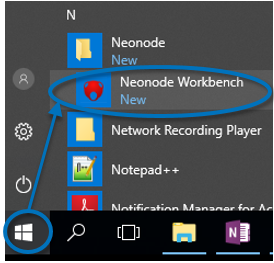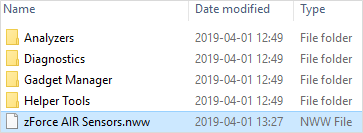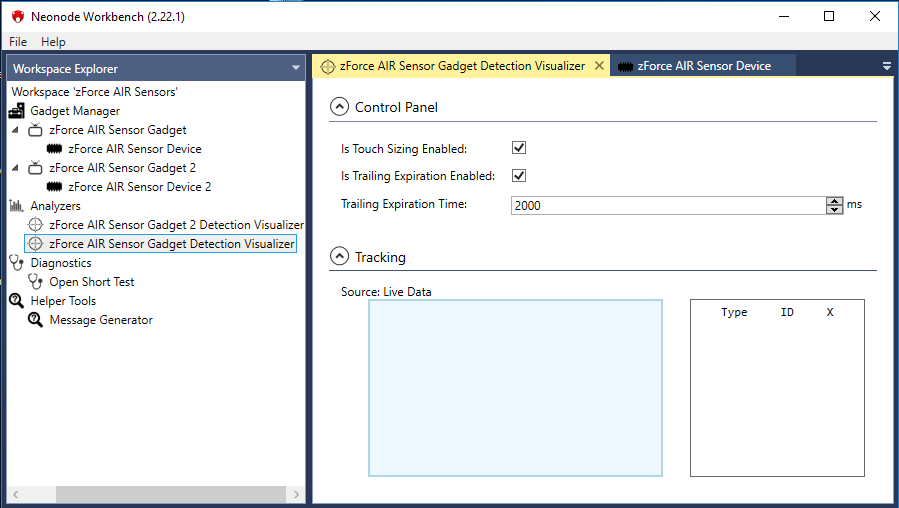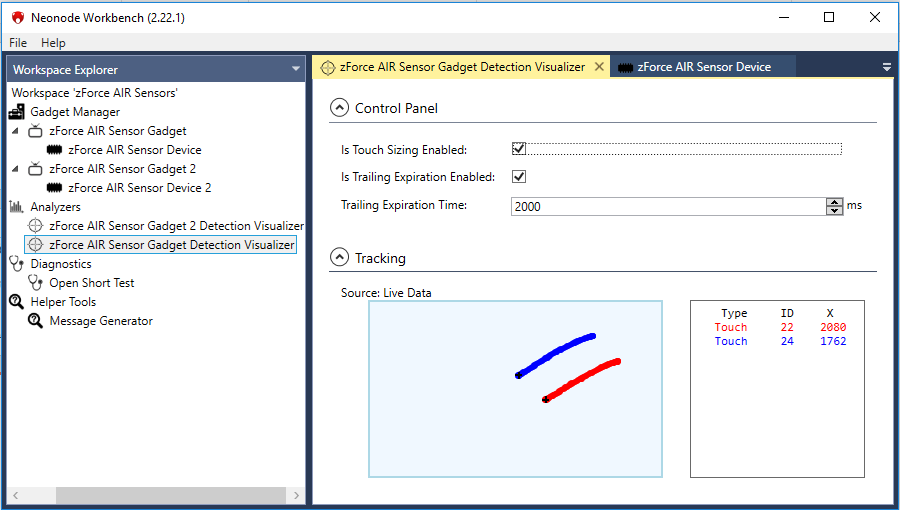Required Equipment
- 1 x Neonode Touch Sensor Module
- 1 x Interface board with an integrated FPC cable with connector
alternately 1 x Interface board and 1 x FPC cable with connector USB cable with a Micro USB type B connector
Make sure that the USB cable transmits both power and data and not only power.
- (Optional) tape for mounting
Additional required equipment:
- Computer
- Operating system: Windows 8.1 or Windows 10.
- Software requirements: .NET Framework 4.5 or higher is required and can be downloaded from Microsoft's official website. Windows 8 and higher has this installed by default.
Connecting Sensor Module
- Lift the flip lock on the interface board.
Insert the FPC cable into the end of the connector, with the connector pads facing down, towards interface board. The yellow piece of PCB of the connector on the other side of the cable is facing upwards. Make sure the direction is straight into the connector and the pads have reached the end of the connector.
Make sure the connector pads of the FPC cable are facing downwards, towards interface board. The sensor module risks damage if the FPC cable is connected in wrong direction.
Press down the flip lock.
2. Connect the FPC cable to the sensor module:
Be careful when connecting the Touch Sensor Module!
Please observe that it is important to be careful when connecting the sensor to an FPC cable such as no excessive force may be applied, no bending of contact is allowed. This may cause the PCB to detach or break.
Since the sensor is an optical device wear gloves when handling the Touch Sensor Module to prevent blurring the light guide plate!
- Place the sensor module so that the module's connector pads are facing downwards (steel surface upwards).
- Insert the sensor module into the connector on FPC cable (yellow piece of PCB of the FPC connector still facing upwards).
- Make sure the direction of the pads is straight into the connector, and the pads have reached the end of the connector.
3. Connect a USB cable with a Micro USB type B connector to the interface board.
4. Make sure no object is within the touch active area of the sensor module before connecting power to the sensor through USB. The sensor calibrates itself when powered on and an object within the touch active area may interfere with the calibration.
If the sensor module is of the 0° type: place the module on a table with the steel surface facing downwards and with the optical surface facing towards you.
If the sensor module is of the 90° type: place the module on a table with the steel surface facing upwards, so the optical surface is facing upwards as well. Make sure no object is within the touch active area above the sensor module.
Alternatively, you can mount the sensor module by using tape in order to fasten the steel surface to the edge of a table, with the optical surface facing towards you.
5. Insert the USB cable into a computer:
6. The green LED on the interface board lights up when connected:
Install and Open Neonode Workbench
- Download the latest release of the Workbench installation package from Downloads.
- Unzip the installation package.
- Open the installation package folder.
- Run the Workbench installer (.msi file) and follow the instructions.
- Open the installation package folder again.
Unzip the Workspace folder to a location where you have write permissions. Write permissions are required to save settings and user data.
In order for the Workbench application to operate, the files in the Workspace folder must be kept together. Move the entire folder if you want to relocate the workspace file.
- Open the Neonode Workbench application.
- From the toolbar, select File >> Open Workspace.
- Navigate to the Workspace folder and double-click the .nww file inside the folder.
Visualizing Touches with Workbench
- In the left panel of the workspace, double-click zForce AIR Sensor Gadget Detection Visualizer. A tab with two sections, Control Panel and Tracking, opens in the right panel.
- If either section in the right panel is collapsed, click to expand it.
- In the right panel
- Enable or disable Touch Sizing. With Touch Sizing enabled, the size of a detected object is indicated by the size of the tracking cursor.
- Enable or disable Trailing Expiration. With Trailing Expiration enabled, the trail of a detected object is shown, indicating its movement.
- Move one or more fingers or other objects in the active area of the sensor module. The registered touches show on the canvas. Type, ID an x- and y-coordinates of each touch is shown to the right of the canvas.
In Workbench, you can also
- Access sensor information such as firmware version.
- Configure the sensor module to explore different configurations.
- Perform a test to identify any damaged laser or photo diodes.
- Generate sensor messages in hexadecimal format without understanding the structure of the communication protocol message.
For further information, please refer to Workbench documentation.





